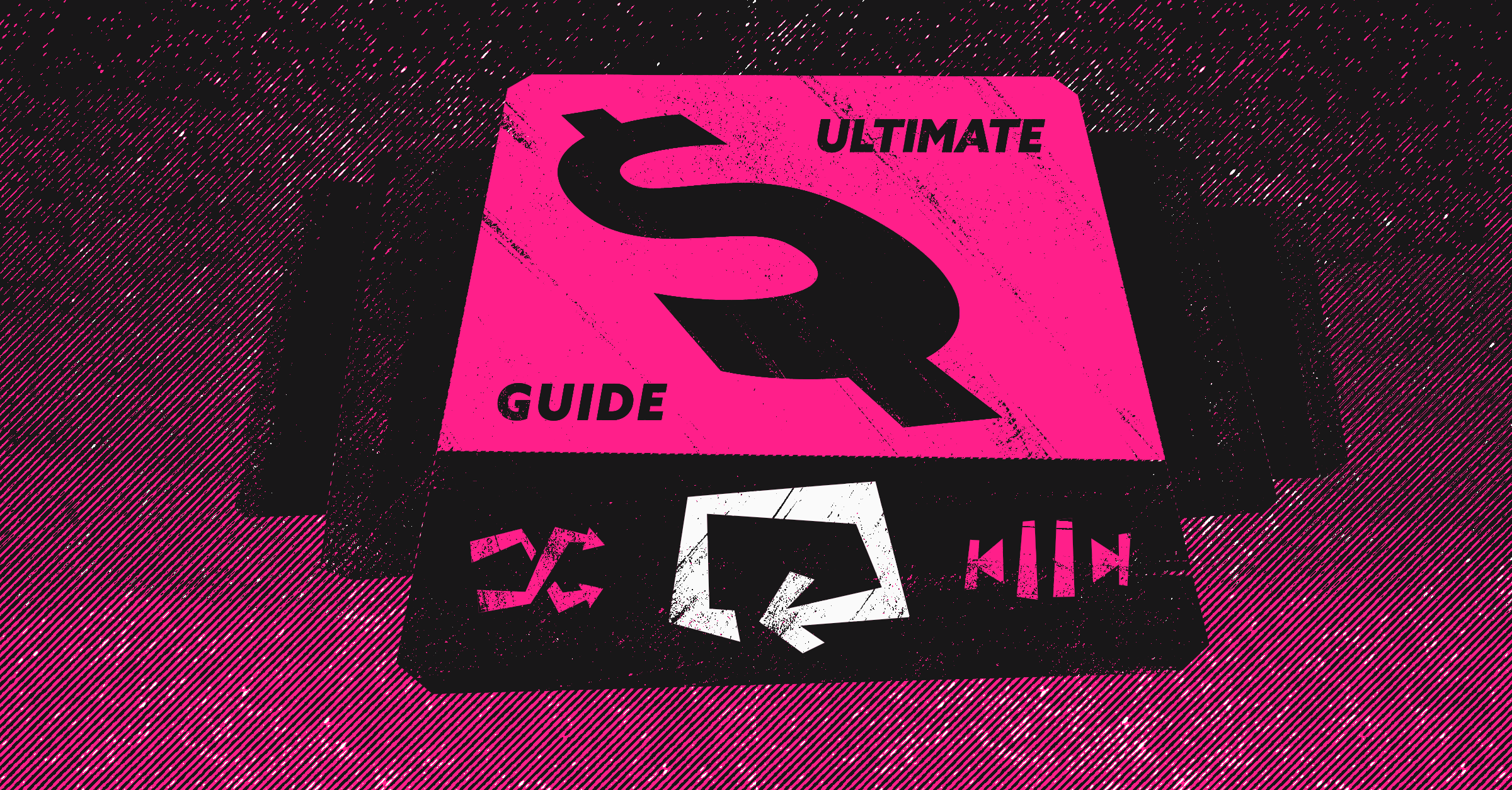
How do you stand up a strong sales enablement framework when go-to-market has shifted so radically?
You’re facing the reality that ten years ago, sales reps were seen as the primary source of information when deciding between products.
Today, it’s the opposite. Only 23% of customers see sales reps as the primary source of information.
Covid pushed a lot of this change — forcing companies to rapidly introduce new and remote sales roles to their organizations, many with a more omnichannel focus.
So what you’re facing now is this: you have to manage new ways of going to market without each method competing for each other.
That’s the only way to close more deals in the sales environment today, and the leading factor in why you need to rethink your sales enablement framework.
In this article, we’ll cover how to build a sales enablement strategy to improve the sales cycle to meet higher revenue objectives in this force omnichannel environment.
What is a Sales Enablement Framework?
“Sales enablement” may be a buzzword right now, but many seem to think it’s the end all be all. The superman framework can solve all sales problems.
Before we get into the frameworks, let’s dive into the definition of sales enablement:
Sales enablement is the act of enabling your sales representatives to close their deals faster, more efficiently, and with fewer unqualified leads using the content resources they need.
Sales enablement content is the content that does the tedious part of the sales job for them, where the answers do not change.
It’s just content that informs the buyers before they get to the sales stage.
That content only works, though, if the content creators (either in sales or marketing) first identify the questions that often come up in the sales process. The sales team also has to leverage that content effectively.
A sales enablement framework defines the activities sales reps need to undergo to carry out a sales enablement strategy.
Simple, right?
Why is sales enablement crucial for success?
Gleanster Research has clued us in to the reality that only 25% of all leads are actually qualified.
That means 75% of the time, your sales reps are talking to someone that has no intention of buying.
Even if they do, they might not be ready to buy at that time.
Sales enablement drastically reduces the number of unqualified leads on calls, live chat, and email with your reps, but it also does more than that.
Selling, and the way customers buy, has drastically shifted to a more “self-serve” culture, in which the customer wants to learn what they can about your product and service before talking to salespeople.
They want to read reviews, compare your product to others on the market, and see resources that answer their questions.
Provide them even a third of that- the answers to their questions- and you’re giving the customer the experience they want and need to make a decision.
Without those resources, customers are likely to feel you don’t actually understand their wants and needs and will move on.
Keep in mind though, when it comes to actually selling, the personal touch of speaking with a sales representative really matters.
It’s all about building that balance along the sales journey.
Align Your Marketing & Sales Teams To Maximize Your Lead Gen Efforts
Marketing and sales are often put into these debilitating silos, and for what? It serves no one to think of them as separate entities.
Rather, you can align them to maximize lead generation (and most certainly produce more qualified leads).
Ensure your marketing team focuses on value-driven activities
Most in the industry know that marketing is a challenge, and it can be more of a challenge to justify activities. So they count absolutely every lead where they can (because some things, like blogs, are really difficult to account for in lead generation).
But are those qualified leads?
When you align sales and marketing, you’re more focused on making sure the activities your marketing team engages in produce something of value for sales.
This may mean removing a lot of the burden of pulling in a large number of leads and focusing on the quality of those leads instead. It’ll be a smaller figure, but worth more in the end.
Sales Enablement Strategy
A sales enablement strategy is all about focusing on the processes and elements that lead to more sales and greater productivity. It’s about creating a repeatable structure for your entire organization.
What are the key elements of a sales enablement strategy?
The root element of a sales enablement framework typically contains the same elements as most sales enablement strategies, including:
Get inspired
- Goals: Get as specific as possible here.
- Training: Since sales enablement is only as effective as the people using it, everyone has to be on the same page with the what, when, and how.
- Content: Sales enablement is all about the content that enables sales.
- Tools: You’ll have to integrate your existing tools (like a CRM) with your enablement strategy.
- KPIs: This helps you measure the goals you set at the beginning of the process and the benchmarks you reach along the way.
How to implement your sales enablement strategy
There are no hard and fast rules on how to implement sales enablement because it depends on how much of the framework you already have in place.
But there is a general sales implementation roadmap to follow:
Get inspired
- Assign someone on the sales team to implement sales enablement and makes sure it’s working (you may have a whole team dedicated to this).
- Design a repository of these resources, along with all the right data, so everyone on the team has access to the documents they need (separated into categories for easier searching).
- Automate everything you can in your sales process, but leave room for personalization.
- Add regular training into your sales enablement program.
How to optimize your sales enablement process after implementation
Sales enablement isn’t a set it and forget it process. It’s something that has to continually evolve with the customer. Just as their engagement has shifted from a more hands-on and salesperson-reliant approach to self-serve and independent research, it is likely to shift again.
So optimization of your sales enablement processes relies largely on keeping an eye on customer engagement and where they are in their buying process when they reach out to a rep.
Also to keep in mind, that content can also change. You have to continuously optimize your resources to ensure they’re answering questions and meeting needs.
Sales Enablement Steps
Just like with implementing your strategy, there are no set steps to sales enablement. Your road to an optimized process relies heavily on the framework that exists.
In most cases, your company already has a set of resources — articles, ebooks, handbooks, webpages.
You’re just not utilizing them in your sales process, or utilizing them at all. You’re relying on your audience to find them on their own.
There are a few steps that you do want to follow through for successful sales enablement solutions…
1. Define your ideal business result
Goals, goals, and goals. Honestly, you really should start any kind of strategy without them. Yet, they’re one of the most overlooked steps in any process.
Why?
Well, goals can be tough to nail down. No one wants to undershoot their goals. The better way to go about goal setting is not to set specific numbers, but to create a general direction for your content.
For instance, you could say your goal is to eliminate the most common questions your sales reps receive. Maybe they’re getting bombarded with calls about the same things, and simple content would help stop that (no need to answer what remains the same for everyone).
2. Align the sales process with the buyer journey
You can’t create content if you don’t understand what you’ll use it for, and you certainly don’t want to waste all that time, money, and energy creating resources when no one needs them.
When you really understand the buyer, when they need your help, the questions they have and need answering before they scoot off to your competitor, the better your resources.
3. Build your enablement program to hit your milestones
How?
It all starts with that goal and the buyer journey.
Let’s continue with the earlier example of eliminating common and basic questions posed to sales reps.
Essentially, those customers are in the discovery phase of the buyer journey. They’re trying to gather all of the information they need to vet you against their other options.
Right there, you understand that you have to create one-pagers, competitor comparisons, product sheets, and even refine your website content.
Your goal and the buyer journey determine your sales enablement framework.
4. Measure and optimize
Measuring sales enablement is less about actual numbers, and more about whether or not you reach your goals.
Is your sales team facing fewer calls about mundane questions that have nothing to do with an actual sale?
Is their sales process speeding up? Are they closing more deals in a shorter period of time?
When you analyze the success of your sales enablement, focus on the usage of the resources you’ve created.
How To Create Sales Driven Content That Converts With Your Audience
There’s quite a bit to unpack here because creating converting content is a process all on its own.
But to get to the heart of it, creating content that converts depends entirely on forgetting about what you need and focusing on what the customer wants and needs.
It sounds a little jarring, really, to let go of the reigns a little and let the audience determine what you create. But this only works if you let them be the drivers.
Develop a content marketing strategy that speaks to your customer’s pain points in depth
To get insight into your customers’ pain points:
- Ask them via survey or direct interviews
- Listen to call recordings or search transcripts for clusters of the most common questions
- Speak to your sales reps and all other client-facing employees to uncover the most common questions and concerns
- Read reviews of your product
- Pay attention to the date on your buyer journey. Where are people dropping off?
Once you understand their pain points, you can search for keywords related to these pains, and start developing the content they really need.
Manage and scale your content strategy based on web analytics data
Most teams need a wealth of data to make decisions, and content is no different. Everything here depends on the goals you’ve set and the metrics you’ve decided on.
The data will determine whether you should eliminate content and refocus, or grow content on a topic based on interest and continued demand.
Sales Enablement Deployment Best Practices
Sales enablement deployment is all about getting the resources to the salesperson and customer.
So best practices naturally surround making this content exceptionally easy and practical.
Take advantage of chatbots to improve communication with customers
Most customers (74%) choose to use chatbots when searching for simple answers. It tends to be a little easier for those searching for specific answers since the chatbots will simply call up that information upon request.
But aside from this automation, it can also connect them quickly to a sales representative. It can be a lot easier and faster than calling and navigating through prompts, and many people will search while they’re doing other tasks.
Become a CRM-first organization
If you’ve set your CRM upright, then you know it’s where all of your leads funnel in, where you create, schedule, and measure your buyer journeys and marketing campaigns. It’s essentially the brain, or the central nervous system of your business, connecting to everything else.
Meaning, it should be your one source of truth when you’re making decisions. It’s the one place you reference before you make your next move.
That means you should:
- Choose the right CRM from the beginning
- Train your reps and marketers how to use it correctly (without that, you don’t have the right information to work on)
- Lay down processes and standards for use
- Use it as a collaborative tool, and a way to break down the silos
- Automate as much as possible, to improve speed and efficiency
- Mine all the data that makes a true impact on customer experience and your business
If you’re doing all of this right, the CRM is the most helpful sales enablement tool, giving you a full view of all of your accounts at once and how they work together.
Leverage AI and Automation
A CRM automates and up processes and improves productivity for your sales reps.
This can include content.
Pairing your CRM with a tool such as Dooly Playbooks can drastically improve your sales enablement deployment by automatically surfacing content in real-time, right when it’s needed.
So, if your reps are in a conversation with a prospect and type a particular phrase or work into their notes, a Playbook pops up on the right-hand side with the relevant content for the rep and the customer.
Our Pipeline editor is also pretty handy (if we do say so ourselves) for automating Salesforce updates. Instead of spending loads of time manually updating each account after every call, all it takes is a single click to update all of your deals.
It’s very probable that you already have systems and actions within your organization that act as the puzzle piece of enablement. It’s unlikely you’re starting with nothing.
But if you want better sales results, you’re going to have to implement the right platforms and build the right sales enablement framework. Dooly helps you set up a solid sales enablement framework with sales call templates and real-time enablement. Talk to a sales process expert today.
Join the thousands of top-performing salespeople who use Dooly every day to stay more organized, instantly update their pipeline, and spend more time selling instead of mindless admin work. Try Dooly free, no credit card required. Or, Request a demo to speak with a Dooly product expert right now.


